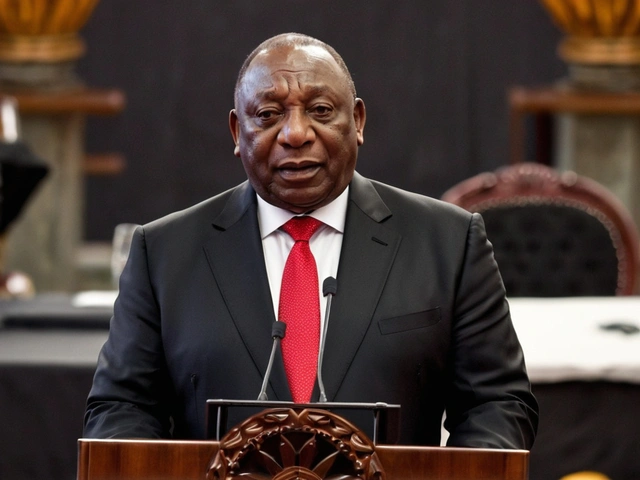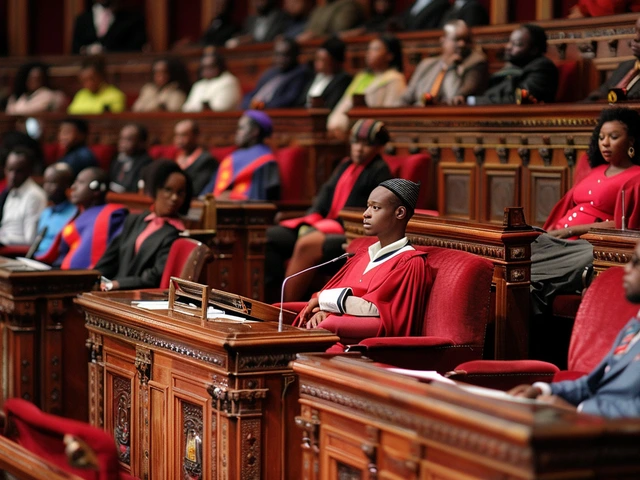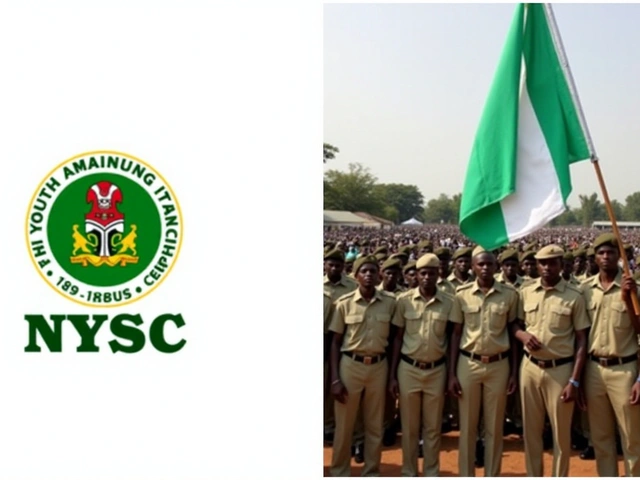
Starting November 15, 2025, commuters across Gauteng will face one of the most extensive traffic disruptions in South Africa’s modern history as the G20 Leaders' Summit prepares to descend on Johannesburg, Tshwane, and Ekurhuleni. The Road Traffic Management Corporation (RTMC), alongside the Gauteng Traffic Police (GTP), Johannesburg Metropolitan Police Department (JMPD), Tshwane Metropolitan Police Department (TMPD), Ekurhuleni Metropolitan Police Department (EMPD), and South Africa Police Service (SAPS), have laid out a 9-day operation to secure the summit scheduled for November 22-23. The Gauteng Provincial Joint Operations Centre (JOC) and the G20 South Africa Coordinating Committee are coordinating the effort — and the scale is staggering. Road closures won’t just be a nuisance; they’ll reshape how people move through the province’s economic heartland for nearly two weeks.
Phase One: The Pre-Summit Shutdown Begins
The first wave hits on November 15, 2025, at 9:00 AM, confined to Johannesburg. Rolling closures on the N1, M1, and N12 highways will be implemented in coordination with urban roads like Rand Show Road, Nasrec Road, and Grayston Drive. This isn’t a drill — it’s the opening salvo. The RTMC and SAPS say this initial window is meant to test logistics, clear potential threats, and establish control corridors. By November 17, Golden Highway between Rand Show Road and Soweto Highway goes fully dark. Then, on the 19th, the stretch next to the Expo Centre shuts down too. It’s not just highways — it’s the arteries feeding the city’s busiest zones.Business and Social Summits Add Layers of Disruption
The B20 Summit, the business arm of the G20, kicks off November 18 at the Sandton Convention Centre. That means Maude Street in Sandton — already a choke point — will see temporary lane closures through November 21. Meanwhile, the G20 Social Summit runs November 18-20 at the Birchwood Hotel and OR Tambo Conference Centre in Ekurhuleni. That’s not just a hotel event — it’s a full-scale traffic operation. Routes like 1st Road, View Point Road, and Trichardt Road will be rerouted or restricted. The G20 South Africa Coordinating Committee has been posting updates on Instagram, but for residents, it’s less about social media and more about whether they can get to work.The Big One: Summit Days and the Grayston Drive Shutdown
November 22 and 23 are the crescendo. From 7:30 AM to 10:00 AM and again from 5:00 PM to 8:00 PM, rolling closures will blanket Johannesburg, Tshwane, and Ekurhuleni. But the most dramatic single closure? Grayston Drive. Fully shut from 4:00 AM to 10:00 AM on the 22nd. That’s the heart of Sandton — where banks, corporate HQs, and luxury hotels line the road. Thousands of commuters, delivery drivers, and service workers will be stranded. The JOC calls it a "high-security zone" — and that’s an understatement. The N1 between Atterbury and Rand Show Road? Closed. The N3 flyovers? Shut. The R21 and R24 junctions? Gridlock waiting to happen. Even the N12 from Elands to Diepkloof will be under heavy restriction. These aren’t minor detours. These are full-system overrides.Who Gets Hurt — And Who Gets Helped
The commercial zones bearing the brunt are unmistakable: Sandton, Melrose Arch, Rosebank, Fourways, Nasrec, and Roodepoort. These aren’t just business districts — they’re employment engines. A single day of disruption could cost the regional economy millions. Taxi operators are already bracing. Small businesses fear lost sales. Parents worry about school runs. But here’s the twist: emergency services aren’t just exempt — they’re prioritized. Ambulances, fire trucks, and police vehicles will have dedicated lanes. The JOC insists real-time updates will be pushed via radio and apps. But how many people have reliable data? How many rely on Google Maps that’s still showing the M1 as open?What’s the Real Cost? And What’s Next?
The Gauteng Provincial Government hasn’t released a financial impact estimate, but experts suggest the economic ripple effect could hit R2 billion over the nine days. That’s not just lost wages — it’s delayed deliveries, missed appointments, canceled meetings. The irony? These closures are meant to ensure safety, yet they create new risks: longer commutes mean more fatigue, more accidents. The SAPS says vehicle inspections will ramp up — but with fewer roads, where do you divert traffic? The answer: nowhere. That’s the catch-22.What’s next? The province is already planning for the 2026 summit in Cape Town. But this year’s operation will set the benchmark. Will future leaders demand tighter security? Or will public pressure force a rethink? One thing’s clear: when world leaders arrive, ordinary South Africans pay the price — in time, money, and stress.
Frequently Asked Questions
How will the G20 road closures affect daily commuters in Johannesburg?
Commuters on the N1, M1, and N12 will face rolling closures during peak hours on November 22-23, with Grayston Drive fully shut from 4 AM to 10 AM on the 22nd. Delays of 60-90 minutes are expected in Sandton, Rosebank, and Nasrec. Public transport routes will be rerouted, and taxi ranks near closed highways may be suspended. The JOC recommends leaving 2-3 hours extra for trips.
Which businesses will be most impacted by the closures?
Sandton’s financial district, Melrose Arch’s retail hubs, and Nasrec’s exhibition venues will suffer the most. The B20 Summit at the Sandton Convention Centre means Maude Street will be partially blocked for four days, disrupting deliveries and customer access. Small retailers near Golden Highway and Rand Show Road report 40-60% lower foot traffic during the closure window.
Will emergency vehicles still be able to move during closures?
Yes. The JOC confirmed that emergency routes will remain open with dedicated lanes and traffic officers stationed at key intersections. Ambulances and fire trucks have priority access, even during full highway closures. However, response times may still be delayed due to congestion on adjacent roads.
Are there official apps or websites for real-time traffic updates?
The RTMC and Gauteng Traffic Police will update traffic conditions via their websites and Twitter/X accounts. SMS alerts are available by registering at rtmc.co.za/g20alert. However, many residents in informal settlements report poor mobile connectivity, making physical signage and radio broadcasts critical.
What alternatives are available for people who rely on public transport?
Gauteng’s Rea Vaya BRT system will reroute several lines away from closed corridors, with additional buses deployed on the R24 and N14 corridors. Minibus taxis will be allowed to operate on designated detour routes, but some traditional routes through Nasrec and Sandton will be suspended. The JOC advises using the Gauteng City Region’s online journey planner for updated bus schedules.
Why are these closures happening so early — on November 15?
The early start allows law enforcement to test security protocols, clear unattended vehicles, and establish checkpoints before world leaders arrive. It also minimizes disruption during the actual summit by completing preliminary operations in advance. Similar tactics were used during the 2010 FIFA World Cup and the 2018 African Union Summit in Johannesburg.










Man, I just checked Google Maps and it’s still showing the M1 as wide open. How are people supposed to plan anything when the tech’s this behind? I live in Pretoria and I’m already thinking of moving my workdays to Fridays just to avoid this mess.
This is what happens when you let foreign elites dictate your city’s rhythm. We’re not some tourist attraction-we’re a living, breathing nation. They get security, we get chaos. And who pays? Us. Always us.
Let’s be real-this isn’t about security. It’s about control. The same people who shut down roads for G20 are the ones who let gangs run the townships. They don’t care about your commute. They care about keeping the global elite comfortable. The N1 closure? A distraction. The real story is the private military contractors flying in from Dubai. Google it.
One cannot help but observe the profound irony inherent in the spectacle of global governance: the very mechanisms designed to ensure international cooperation-namely, the imposition of infrastructural disruption-serve only to exacerbate the fragmentation of domestic social cohesion. The economic calculus presented here, while quantifiable, fails to account for the phenomenological burden borne by the commuter, whose daily existence is reduced to a series of logistical compromises in service of an abstract notion of order. One must ask: at what point does security become tyranny?
To everyone stressed about the closures: I know it’s overwhelming. But if you’re able, please check in on your neighbors-especially the elderly or those without cars. The Rea Vaya reroutes are posted online, and volunteers are helping at taxi ranks. We’ll get through this together. And if you need someone to talk to about the stress, I’m here.
Been there, done that. Remember the 2010 World Cup? Same script. Roads shut, taxis banned, people angry. But you know what? The city didn’t collapse. People adapted. Got up earlier. Used bikes. Carpooling picked up. We’ve done hard things before. We’ll do it again. No need to panic-just plan smarter.
There’s something deeply human about how we respond to disruption. We rail against it, yes-but we also find unexpected kindness in it. The guy who gave me a ride when my taxi got stuck near Nasrec? Didn’t even know my name. That’s the real infrastructure here-not the highways, not the checkpoints-but the quiet acts of solidarity that emerge when systems fail. Maybe the G20 didn’t intend to remind us of that… but it did.
I cried when I saw the route changes for my daughter’s school bus. She’s 7. She doesn’t understand why we can’t take the usual road anymore. I showed her the map, pointed out the detour, and told her we’d make it a game-count how many red lights we hit. She laughed. That’s the thing. Even in chaos, we find small ways to keep joy alive. Hold on, South Africa. We’re stronger than this.
Stop whining. This is national security. You think the US or UK would let their streets be open during a G20? No. You’re privileged to live in a country that even has a G20. Be grateful. If you can’t handle a few days of traffic, maybe you shouldn’t be driving at all.
Okay, real talk-this is the moment we rise. I’m organizing a community ride-share group for people stuck near the R24. Free coffee, free phone chargers, free vibes. DM me if you need a lift. This isn’t just about getting to work-it’s about showing up for each other. Let’s turn this chaos into connection. #GautengStrong